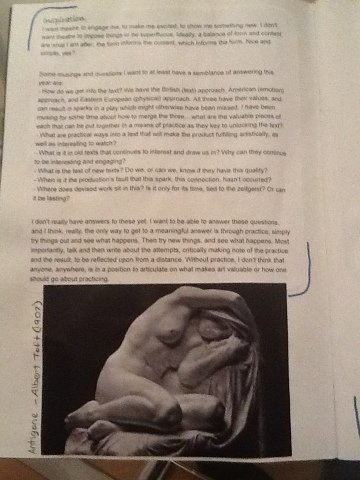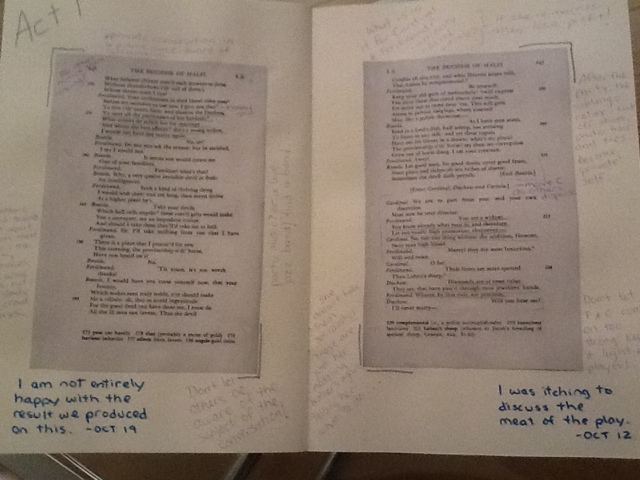I have a terrible habit of selling myself short - either by not stepping forward when I know I am best for a task, or by letting myself settle for something less that my best work. Usually this happens when I worry I am being overwhelmed, or that I am being overwhelming....most commonly a twisted combination of the two. I did just that at the end of last term, and am now feeling the effects of it. At the time, I told myself it was good enough. But is good enough okay? Not for me it isn't. I am more than a little disasppointed in myself for this, as I feel I poured a lot of energy and thought into something without really thinking through the focus and the goal of it. I have, however, learned from it. It will not be happening again.
Anyway...enough self-musing. My scene from The Balcony went up today, with decent success. My 3 actors did a great job of bringing to life the layers I was hoping to see, with the short rehearsal time. The feedback was positive, that my choices made sense, and I was able to bring out something interesting about the parallels and rivalry between Carmen and Irma. So that is good. I didn't really get a chance to talk about what inspired me, all of the research I had done in Prisoner of Love, and the Gene Plunka "Rites of Passage of Jean Genet", not to mention the DeFrancia painting that inspired a lot of the connections in the movement. I did get to bring up the ideas I latched to from Genet's "Pour Jouer Le Balcon" which was good.
I have a mountain of films to watch, and a novel to read, and a book...and 2 scenes to write. Goodness me. Blogging might be slow for a couple days.
Anyway...enough self-musing. My scene from The Balcony went up today, with decent success. My 3 actors did a great job of bringing to life the layers I was hoping to see, with the short rehearsal time. The feedback was positive, that my choices made sense, and I was able to bring out something interesting about the parallels and rivalry between Carmen and Irma. So that is good. I didn't really get a chance to talk about what inspired me, all of the research I had done in Prisoner of Love, and the Gene Plunka "Rites of Passage of Jean Genet", not to mention the DeFrancia painting that inspired a lot of the connections in the movement. I did get to bring up the ideas I latched to from Genet's "Pour Jouer Le Balcon" which was good.
I have a mountain of films to watch, and a novel to read, and a book...and 2 scenes to write. Goodness me. Blogging might be slow for a couple days.














